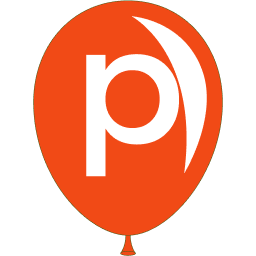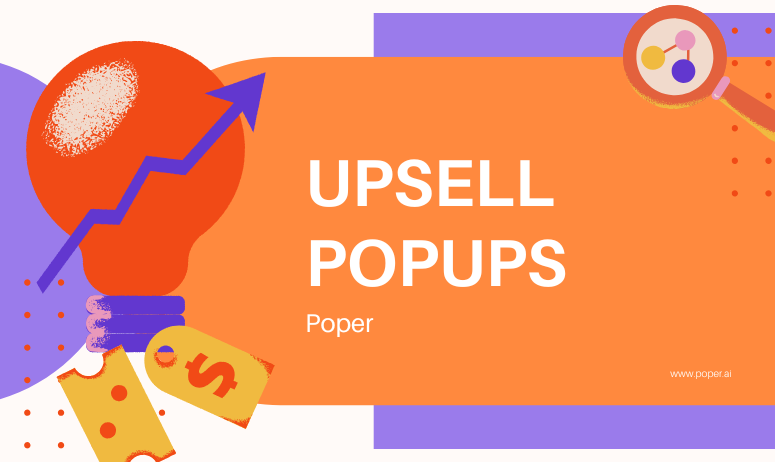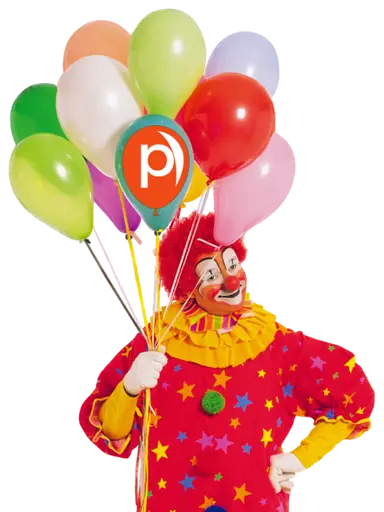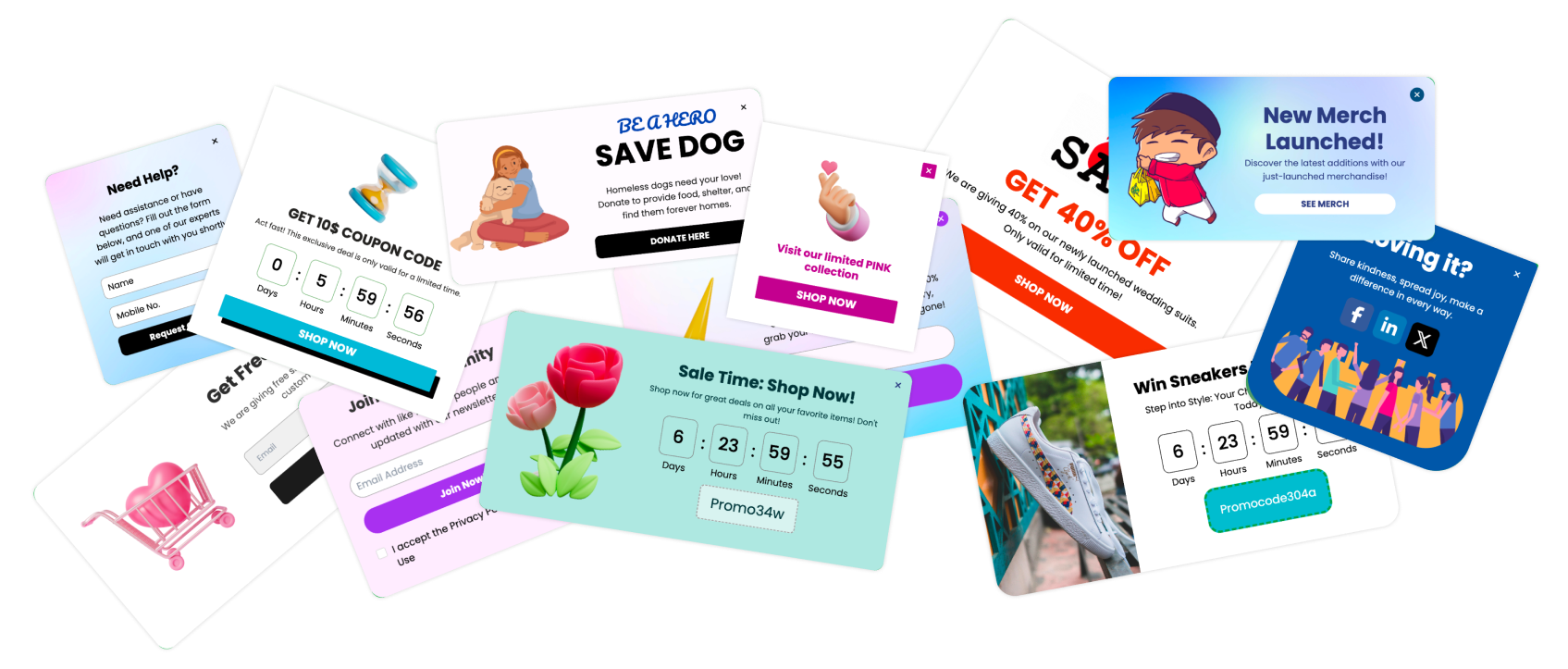In today’s hyper-competitive digital world, customer acquisition costs are higher than ever. That’s why brands are turning to upselling, not just as a sales strategy but as a smart engagement tool that creates value for both the customer and the business. And the easiest way to execute it? Upsell popups.
Upsell popups are website overlays or messages designed to encourage shoppers to spend more — often by recommending a better version, an upgrade, or a complementary product to what they’re already considering or have added to their cart.
For instance, if a customer adds a $50 product to the cart, a well-timed popup might suggest:
“Upgrade to the Premium Bundle for just $10 more and get free shipping!”
Unlike intrusive ads, upsell popups are contextual, appearing at the right time with the right offer. They’re a natural part of the buyer journey — not an interruption.
| Feature | Description |
|---|---|
| Goal | Increase cart value and conversions |
| Timing | Shown during checkout, after add-to-cart, or post-purchase |
| Personalization | Based on cart items, user behavior, or purchase history |
| Example | “Add a warranty for 20% off before checkout!” |
The Psychology Behind Upselling
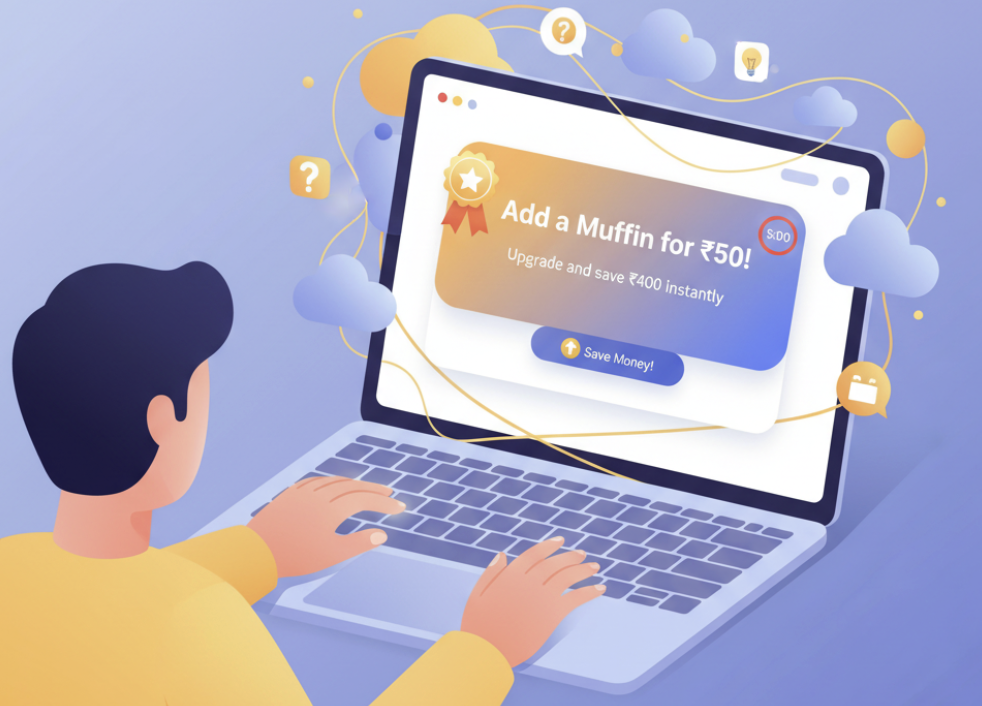
“People don’t buy the best products — they buy what feels like the best decision at that moment.”
That’s the real secret behind upselling. It’s not about convincing someone to spend more. It’s about helping them make a smarter choice that feels more valuable, complete, or rewarding.
When you understand the psychology behind upsell popups, you realize they’re not sales tricks. They’re behavioral nudges built on how people naturally think, decide, and justify purchases.
Why Customers Respond to Upsells
Humans crave convenience and value. If a popup makes a customer feel they’re getting more for less — they’ll act on it.
Here’s why upsell popups convert so well:
Ease of Decision: Customers don’t need to restart their buying process. The offer is right there, one click away.
Perceived Value: The upsell feels like a “smart deal” rather than an expense.
Reduced Effort: The popup saves time by suggesting relevant products.
Trust Factor: Since the recommendation comes after they’ve shown interest, it feels personalized — not random.
Think of it like this — if you’re ordering a coffee, and the barista asks, “Would you like to add a muffin for ₹50?” — you don’t feel pressured. You feel served. Upsell popups follow that exact emotional rhythm.
Emotional Triggers: Urgency, Exclusivity, and Value
Upsell popups work because they tap into the core emotional drivers of purchase behavior — urgency, exclusivity, and perceived value.
| Emotional Trigger | Why It Works | Example in an Upsell Popup |
|---|---|---|
| Urgency | Pushes action by creating time-sensitive value | “Upgrade now — offer ends in 10 minutes!” |
| Exclusivity | Makes customers feel special or rewarded | “Only for returning users — add this for 25% off!” |
| Value | Reinforces smart buying and savings | “Upgrade and save ₹400 instantly” |
Urgency makes people act before they overthink. Exclusivity triggers pride and belonging. And value-based framing justifies the upsell emotionally — not logically.
When you combine these triggers inside a clean, trustworthy popup, conversions can jump dramatically without ever annoying users.
The Difference Between Upselling and Cross-Selling
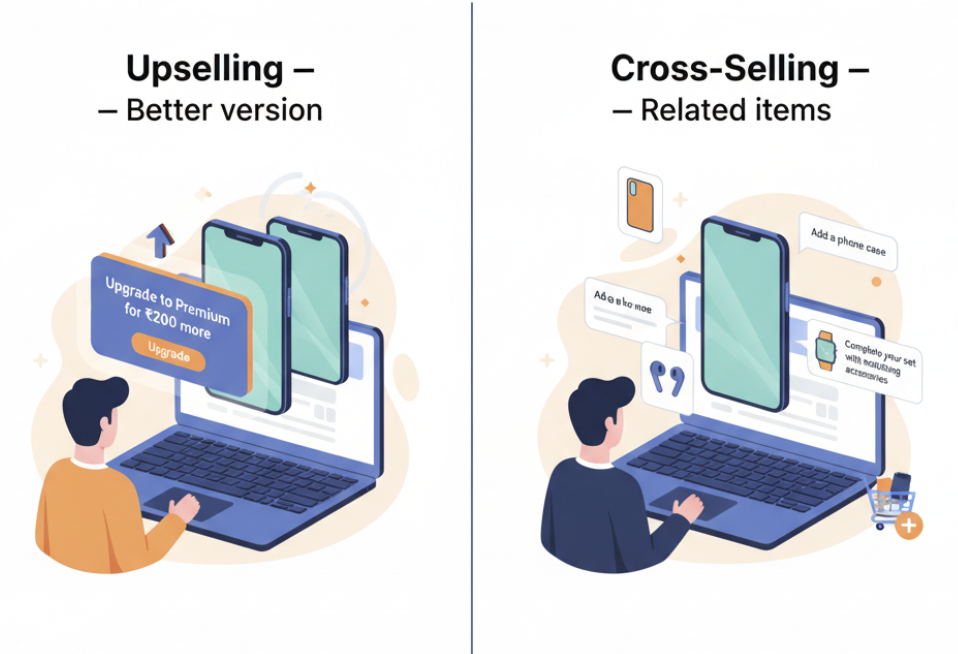
| Aspect | Upselling | Cross-Selling |
|---|---|---|
| Goal | Encourage customers to buy a higher-priced or upgraded version | Suggest related or complementary products |
| Example | “Upgrade to the Premium plan for ₹200 more.” | “Add a phone case to your new smartphone.” |
| When It Appears | During checkout or post-purchase | During browsing or after adding to cart |
| Result | Increases order value with one product | Increases basket size with multiple products |
In simple terms:
Upselling = Better version of what they’re already buying.
Cross-selling = More items related to what they’re buying.
Both are powerful, but upsell popups focus on increasing the value of a single purchase, which is why they’re incredibly effective for boosting Average Order Value (AOV) without complicating the decision-making process.
5 Types of Upsell Popups
Not all upsell popups are created equal. The way you present an upsell depends on what stage your customer is in, what they’re buying, and what motivates them to act.
When implemented thoughtfully, each popup type can enhance user experience and revenue simultaneously. Let’s explore the most effective types of upsell popups and how brands can use them strategically.
1. Product Recommendation Popups (Add-Ons, Upgrades)
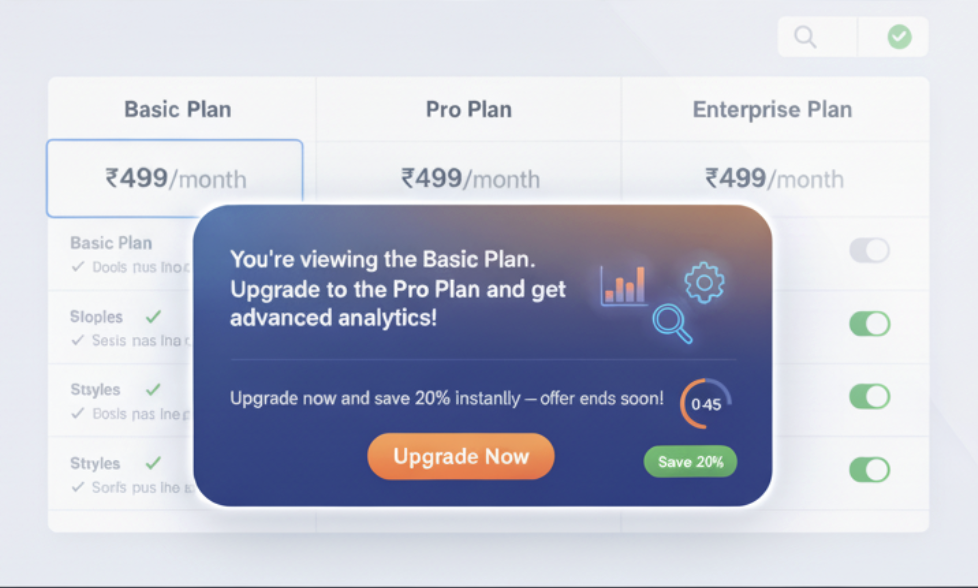
What it is:
A product recommendation popup suggests an upgraded or better version of the product currently viewed or added to the cart.
Example:
“You’re viewing the Basic Plan. Upgrade to the Pro Plan and get advanced analytics!”
Why it works:
It uses contextual relevance — the user is already interested, and the popup simply makes their decision smarter.
Best for: SaaS products, subscription models, and tiered pricing plans.
| Trigger Point | Example Message | Conversion Tip |
|---|---|---|
| Viewing a product | “Upgrade to the Pro version for ₹299 more.” | Highlight key benefits (not just price difference). |
| At checkout | “Upgrade now and save 20% instantly.” | Add urgency with a countdown timer. |
2. Bundle or Combo Offer Popups
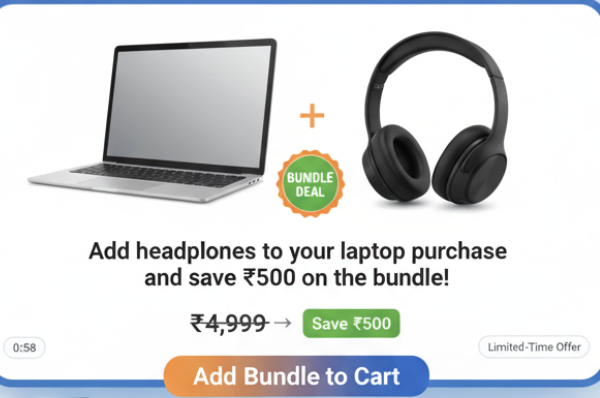
What it is:
Bundle popups encourage users to purchase multiple items together for a better deal — increasing total order value.
Example:
“Add headphones to your laptop purchase and save ₹500 on the bundle!”
Why it works:
It appeals to value-driven buyers who love saving through bundled deals. It also reduces friction by helping them complete their shopping in one go.
Best for: E-commerce stores selling related products (fashion, electronics, beauty).
3. Cart Value and Checkout Upsells
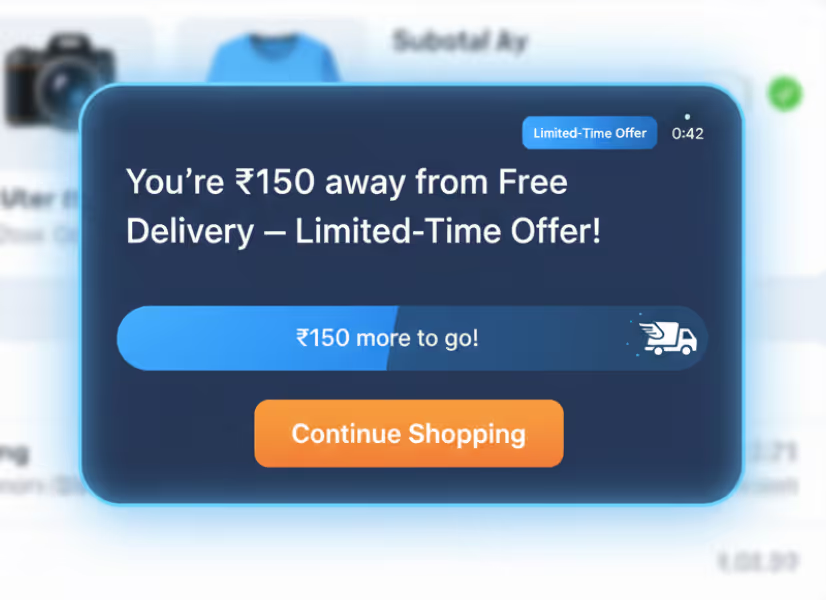
What it is:
These popups trigger when a user is at checkout or when the cart total reaches a certain value, nudging them to spend slightly more to unlock benefits.
Example:
“Add ₹200 more to your cart to get free shipping!”
Why it works:
It gives customers a clear reason to spend more without feeling pushed. The perceived gain (like free delivery or bonus items) feels greater than the cost increase.
| Goal | Popup Example | Emotional Trigger |
|---|---|---|
| Boost order value | “Add one more product for 15% off your entire cart.” | Value-driven |
| Increase urgency | “You’re ₹150 away from free delivery — limited-time offer!” | Urgency |
Best for: Online stores with free shipping thresholds or limited-time promotions.
4. Post-Purchase and Thank-You Page Upsells
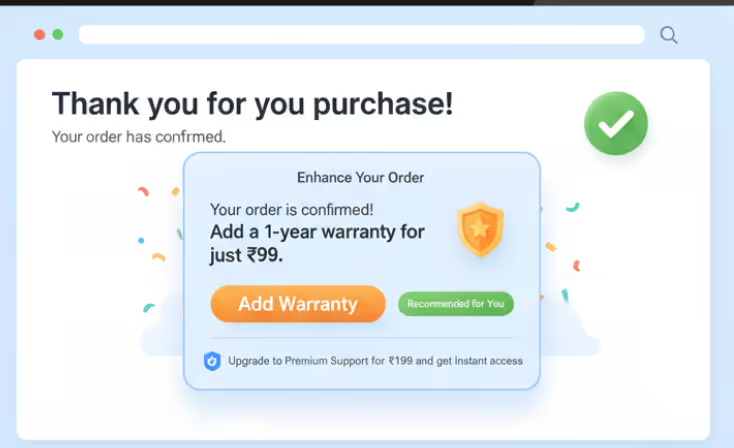
What it is:
These appear after checkout, offering an additional purchase or upgrade related to what the customer just bought.
Example:
“Your order is confirmed! Want to add a 1-year warranty for just ₹99?”
Why it works:
The buying mindset is still active — the user already trusts your brand. Post-purchase upsells can lead to impulse add-ons and higher lifetime value.
Best for: SaaS businesses, renewals, product protection plans, accessories, or service upgrades.
5. Personalized Upsells Based on User Behavior
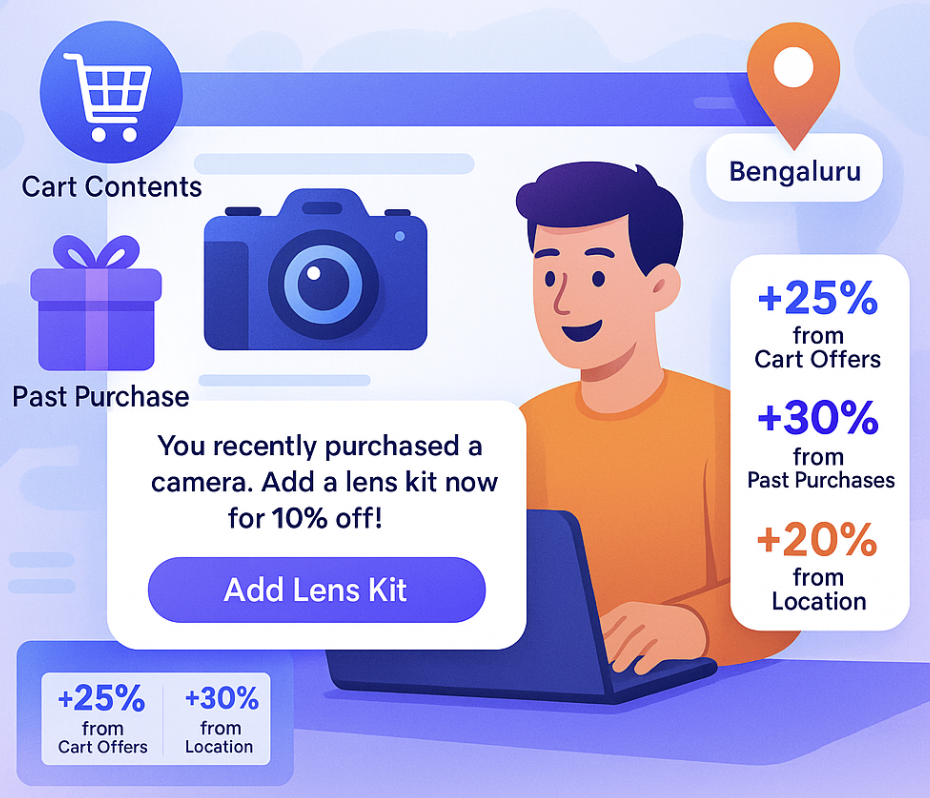
What it is:
These popups use data-driven personalization — browsing history, location, past purchases, or even scroll depth — to show hyper-relevant offers.
Example:
“You recently purchased a camera. Add a lens kit now for 10% off!”
Why it works:
Personalization removes friction and increases the likelihood of conversion by showing offers that genuinely make sense.
| Personalization Data Used | Popup Example | Expected Lift in Conversions |
|---|---|---|
| Cart contents | “Add a matching charger for ₹299.” | +25% |
| Past purchase | “Complete your collection with this add-on.” | +30% |
| Location | “Special offer for Bengaluru customers.” | +18% |
When and Where to Show Upsell Popups
You can have the most persuasive offer, the most beautiful popup, and still fail — simply because it appeared too early, too late, or in the wrong place.
The magic of upsell popups lies in context and timing. When placed strategically within the customer journey, they don’t interrupt — they assist.
Let’s break down when and where to show upsell popups for maximum conversion without annoying users.
1. Entry, Exit, Scroll, and Click Triggers
Upsell popups rely heavily on behavioral triggers — cues that decide when a popup should appear based on how the user interacts with your site.
Here’s a breakdown of the most effective triggers:
| Trigger Type | When It Appears | Best Used For | Example Message |
|---|---|---|---|
| Entry Trigger | As soon as the visitor lands | Limited-time bundle or discount | “Welcome! Add one more product and get 20% off your first order.” |
| Scroll Trigger | After user scrolls 50-70% of the page | Content-aware upsells | “Liked what you read? Upgrade your plan for advanced tools.” |
| Click Trigger | On clicking a specific button or product | Upselling premium versions | “You’re almost there! Get the Pro version for ₹199 more.” |
| Exit Intent | When cursor moves toward the close button | Cart recovery upsells | “Leaving already? Upgrade now and save ₹500 instantly!” |
2. Choosing the Right Timing in the Customer Journey
A perfectly timed popup feels like a natural extension of the buying process — not an interruption.
Here’s how upsell popups align with different stages of the customer journey:
| Customer Stage | User Mindset | Ideal Popup Type | Example Offer |
|---|---|---|---|
| Awareness | Browsing and exploring options | Entry or scroll-based upsells | “Upgrade now for early-bird savings.” |
| Consideration | Comparing features or pricing | Product recommendation popups | “Customers prefer the Premium plan for better ROI.” |
| Decision | Adding to cart or checking out | Cart value upsells | “Add one more product to unlock free shipping.” |
| Post-Purchase | Order confirmed | Thank-you upsells | “Add a warranty plan for just ₹99 — one-time offer.” |
Timing your popups this way ensures they feel helpful, not intrusive. You’re stepping in at the right emotional moment — when the user already sees value.
3. Identifying High-Intent Pages for Maximum Impact
Not every page deserves a popup. To maximize engagement, focus on high-intent pages where users are most likely to take action.
| High-Intent Page | Why It’s Effective | Best Upsell Type |
|---|---|---|
| Product Page | The user is exploring product details | Product upgrade or add-on popup |
| Cart Page | High purchase intent, open to small add-ons | Cart value popup (“Add ₹200 more for free shipping”) |
| Checkout Page | The final decision stage | Urgency-based upsells (“Add now and save 15%”) |
| Thank-You Page | The customer already trusts you | Post-purchase upsell (“Add 1-year protection plan”) |
With Poper’s analytics dashboard, you can see exactly which pages generate the highest engagement and set page-specific popups automatically.
This ensures your upsells appear only where and when they’re most likely to convert, protecting the customer experience while boosting your revenue.
Crafting a High-Converting Upsell Popup
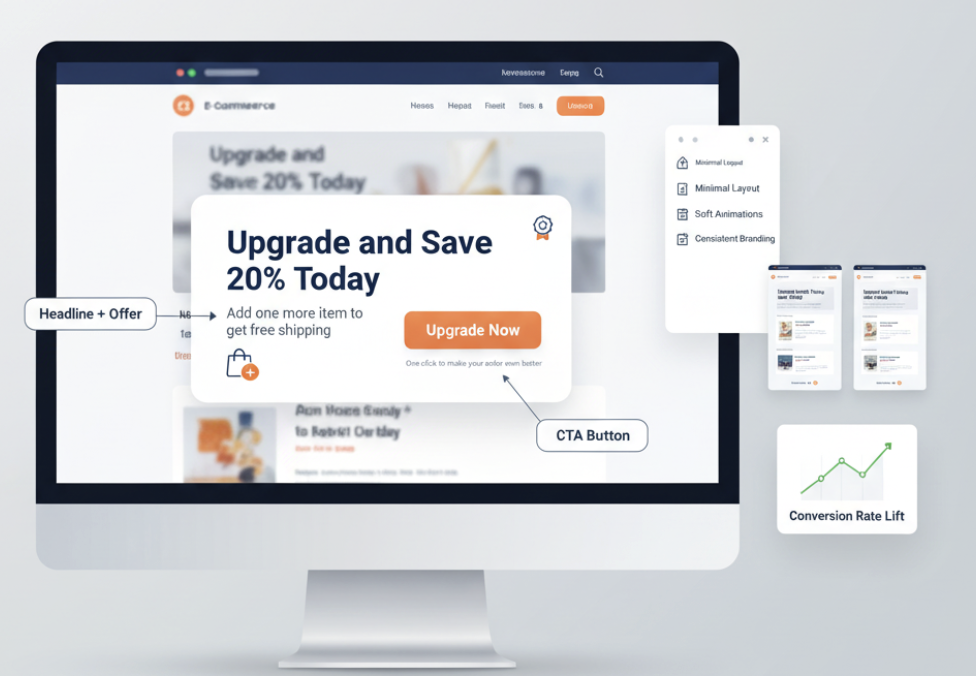
That’s the difference between an annoying popup and a profitable one. The best upsell popups aren’t flashy or loud — they’re clear, relevant, and emotionally aligned with the user’s intent.
Key Elements — Headline, Offer, Visuals, CTA
Every high-performing upsell popup has a few key components. Each one plays a role in catching attention, holding interest, and inspiring action.
| Element | Purpose | Tips for Higher Conversions |
|---|---|---|
| Headline | Captures attention instantly | Keep it under 8 words. Focus on value: “Upgrade and Save 20% Today.” |
| Offer | Communicates the benefit | Make it irresistible — “Add one more item to get free shipping.” |
| Visuals | Reinforce the message emotionally | Use product visuals or icons to strengthen clarity. |
| CTA Button | Drives action | Use contrasting colors and direct verbs like “Upgrade Now” or “Add to Cart.” |
How to Write Persuasive Copy That Sells
Your popup copy should speak like a friendly store assistant, not a salesperson shouting offers.
Follow this simple framework for writing popup text that converts:
1. Start with empathy:
Acknowledge what the customer is already doing.
“You’re almost ready to check out — here’s something that’ll make your order even better.”
2. Add clear value:
Tell them what they’ll gain, not what they’ll spend.
“Upgrade to Premium and unlock analytics worth ₹1,000 — free!”
3. End with urgency:
Give them a reason to act now.
“Offer valid only for the next 10 minutes!”
Design Principles for Non-Intrusive Popups
A popup should enhance your site, not hijack it. Users hate being interrupted, but they love discovering value.
Here’s how to keep your upsell popup visually appealing and non-intrusive:
| Design Principle | Description | Best Practice in Poper |
|---|---|---|
| Minimal Layout | Focus on one message and one action | Choose simple templates with white space |
| Soft Animations | Gentle entry or slide effects | Use fade-in or slide-up transitions |
| Responsive Design | Works seamlessly across devices | Preview on mobile before publishing |
| Consistent Branding | Colors, fonts, and icons aligned with your site | Sync your brand kit in Poper for consistency |
A/B Testing and Iteration for Better Results
Even great popups can get better — and that’s where A/B testing comes in. Small tweaks in wording, visuals, or timing can lead to big jumps in performance.
Here’s what to test regularly:
| What to Test | Why It Matters | Example Variations |
|---|---|---|
| Headline | Determines attention capture | “Upgrade Now” vs. “Get Premium Access” |
| Offer Format | Tests pricing sensitivity | “Save ₹200” vs. “Get 10% off” |
| Popup Timing | Finds best trigger moments | 5-second delay vs. 10-second delay |
| CTA Button Color | Affects visibility | Green vs. Orange |
The rule: Always test one element at a time. That’s how you isolate what’s really driving the lift.
Personalization and Targeting
Generic upsell popups are like shouting into a crowd. Personalized ones? They’re like whispering the perfect offer to the right person at the right time.
In today’s digital landscape, relevance beats reach. The key to successful upsell popups lies in understanding user behavior, segmenting audiences smartly, and using AI-driven personalization to deliver offers that feel tailor-made.
Using Customer Segmentation for Relevant Offers
Segmentation is the foundation of personalization. You can’t personalize if you treat every visitor the same.
By dividing your audience into segments, you ensure that each visitor sees only what’s relevant to their needs and stage in the buying journey.
Here’s how you can segment users for smarter upsell targeting:
| Segment Type | Criteria | Upsell Example |
|---|---|---|
| New Visitors | First-time visitors | “Sign up now and upgrade to Premium for 20% off.” |
| Returning Customers | Repeat visitors or buyers | “Welcome back! Add this bundle to your cart and save ₹300.” |
| Cart Abandoners | Users who added to cart but didn’t buy | “Still thinking? Upgrade now and get a free add-on.” |
| High-Spenders | Customers with higher purchase value | “You’re a VIP! Add this exclusive product at 25% off.” |
| Location-Based | Offers tailored to regional context | “Special deal for Bengaluru customers — upgrade today!” |
Dynamic Popups Based on Cart Value or Browsing History
Imagine this: A visitor adds items worth ₹900 to their cart. Then, a popup appears saying,
“Add ₹100 more and get free shipping.”
That’s a dynamic upsell popup — personalized in real time based on cart value, product category, or browsing history.
Dynamic popups don’t just show offers; they respond to user behavior in the moment. This makes them feel intelligent and contextual, not random.
Here’s how dynamic targeting boosts engagement:
Creating Upsell Popups in Poper
That’s exactly what Poper does for marketers and founders. Instead of spending hours designing, coding, or testing popups manually, Poper helps you create, personalize, and optimize upsell popups in minutes — no technical skills needed.
In this section, you’ll learn why Poper is the best platform for upsell popups and exactly how to create your first high-converting one step-by-step.
Step-by-Step: How to Create an Upsell Popup in Poper
Here’s a complete walkthrough to create your first upsell popup using Poper. You can follow these steps and have it live on your site in under 10 minutes.
Step 1: Log in to your Poper dashboard
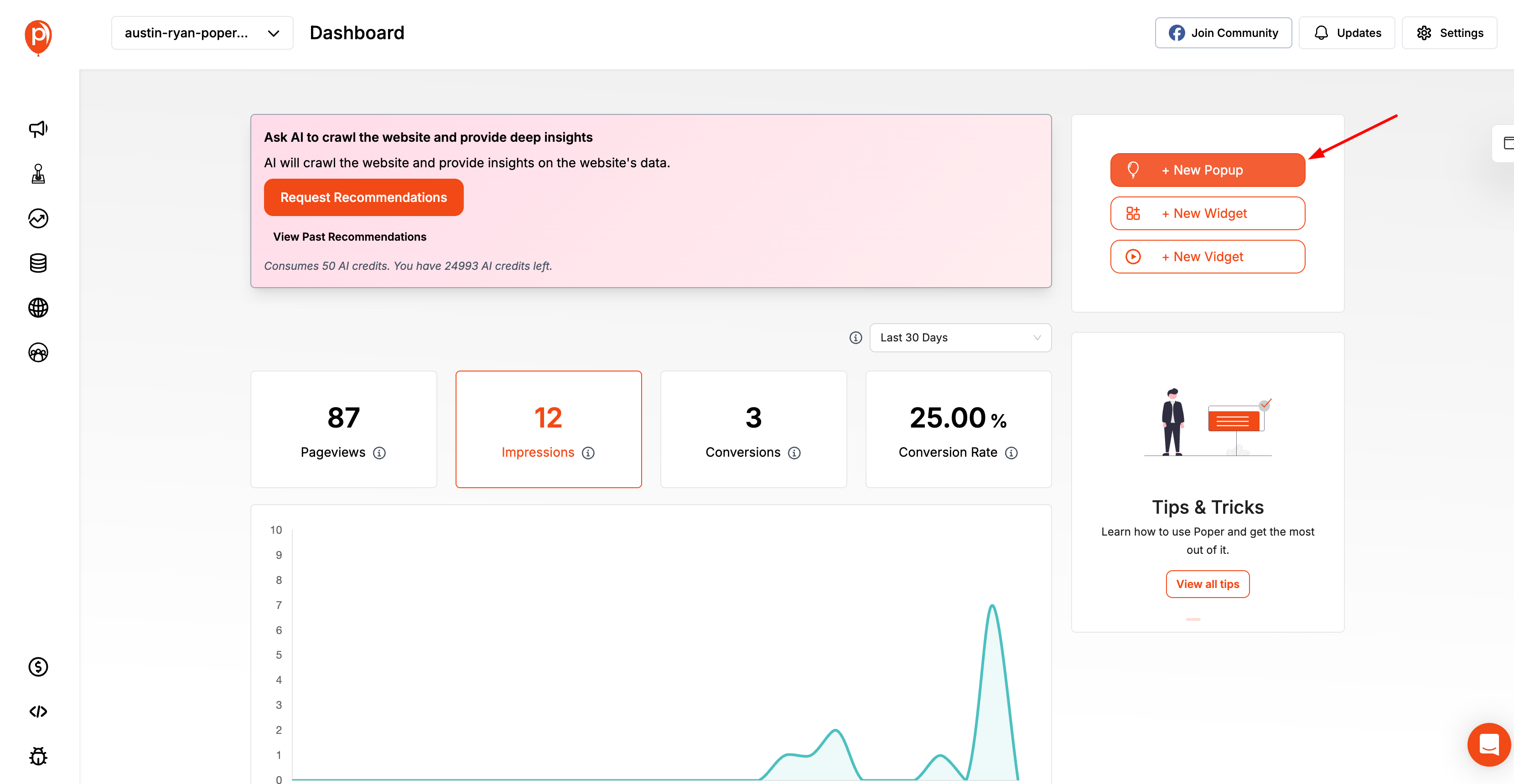
Once you’re logged in, head to your workspace. You’ll see your existing popups and a button that says “Create Popup” — click that to start.
Step 2: Choose “Upsell Template”
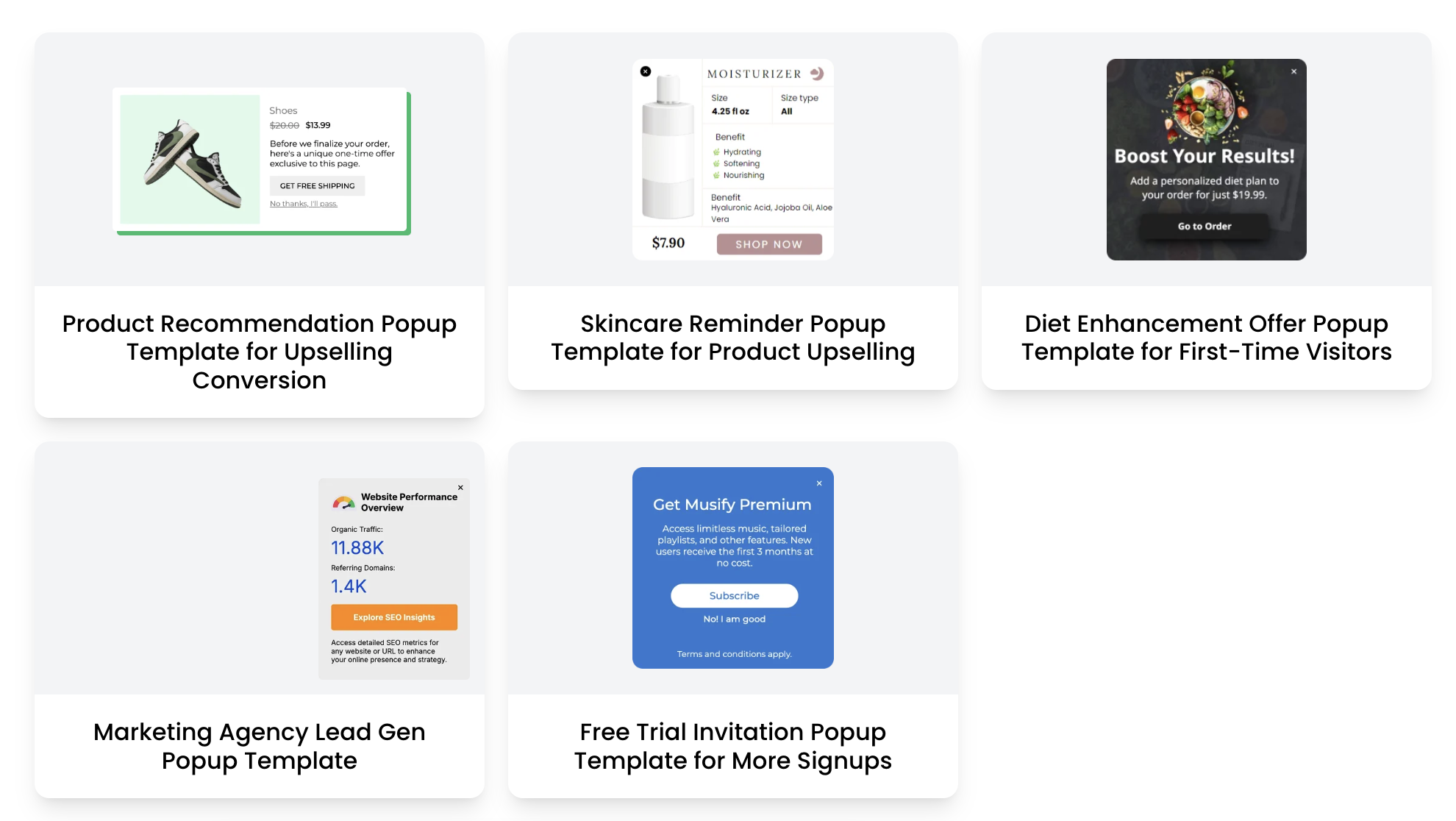
In the template gallery, select the Upsell Popup layout. You’ll find pre-designed templates for:
Checkout upsells
Bundle suggestions
Upgrade offers
Post-purchase thank-you upsells
Each template is fully customizable — colors, text, triggers, and layout.
Step 3: Customize the Headline, Message, and Visuals
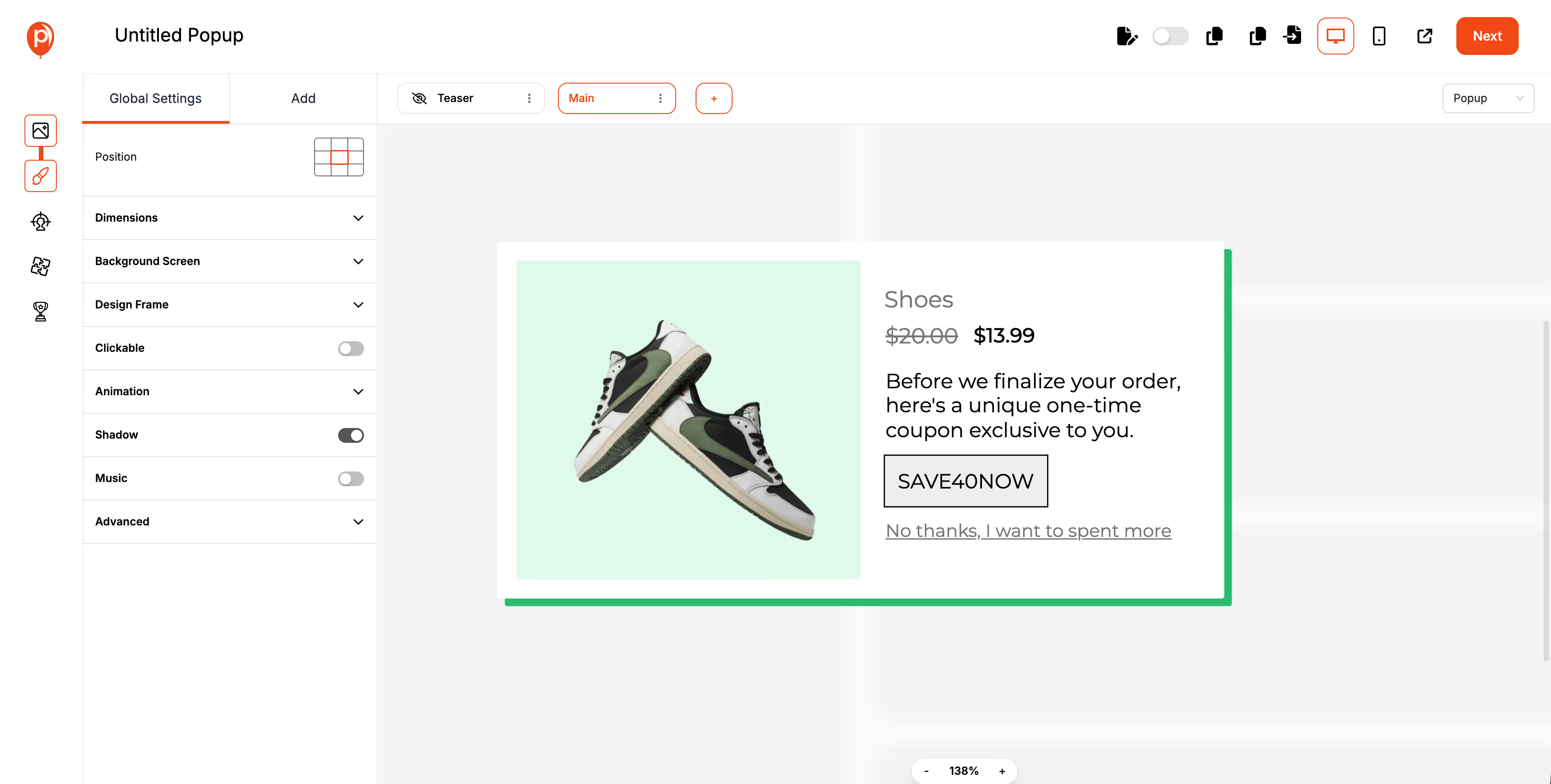
Add your offer headline — make it clear and value-driven.
Example:
“Upgrade to Premium for just ₹199 more — unlock all advanced features!”
Then, upload visuals (product images or icons) that match your brand identity.
In Poper, you can even add dynamic tags like {{user_name}} or {{cart_value}} for real-time personalization.
Step 4: Add Your Upsell Product or Offer
Connect your upsell offer. You can:
Link directly to a product page
Add an “Add to Cart” button
Or show a discounted bundle
For SaaS businesses, this could be upgrading from a Basic plan to Pro. For e-commerce, it could be adding a complementary item.
Step 5: Set Triggers
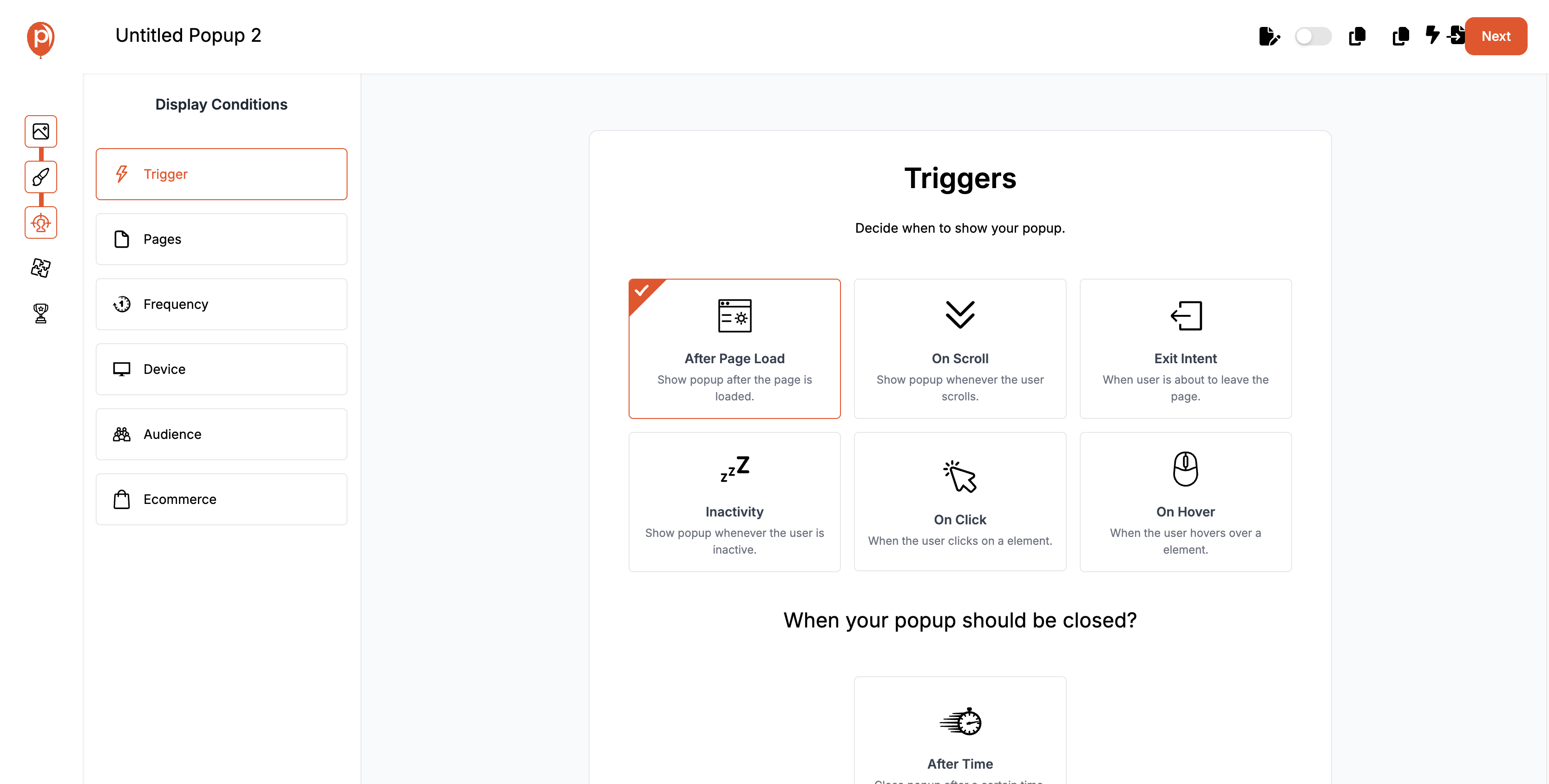
This is where the magic happens.
Decide when and where your popup should appear. Popular triggers include:
Cart Value Trigger: Show upsell when cart exceeds ₹500
Exit-Intent Trigger: When user tries to leave checkout
Scroll Trigger: After 60% page scroll
Post-Purchase Trigger: 3 seconds after order confirmation
All triggers in Poper are stackable, meaning you can combine multiple conditions for precise targeting.
Step 6: Enable AI Personalization
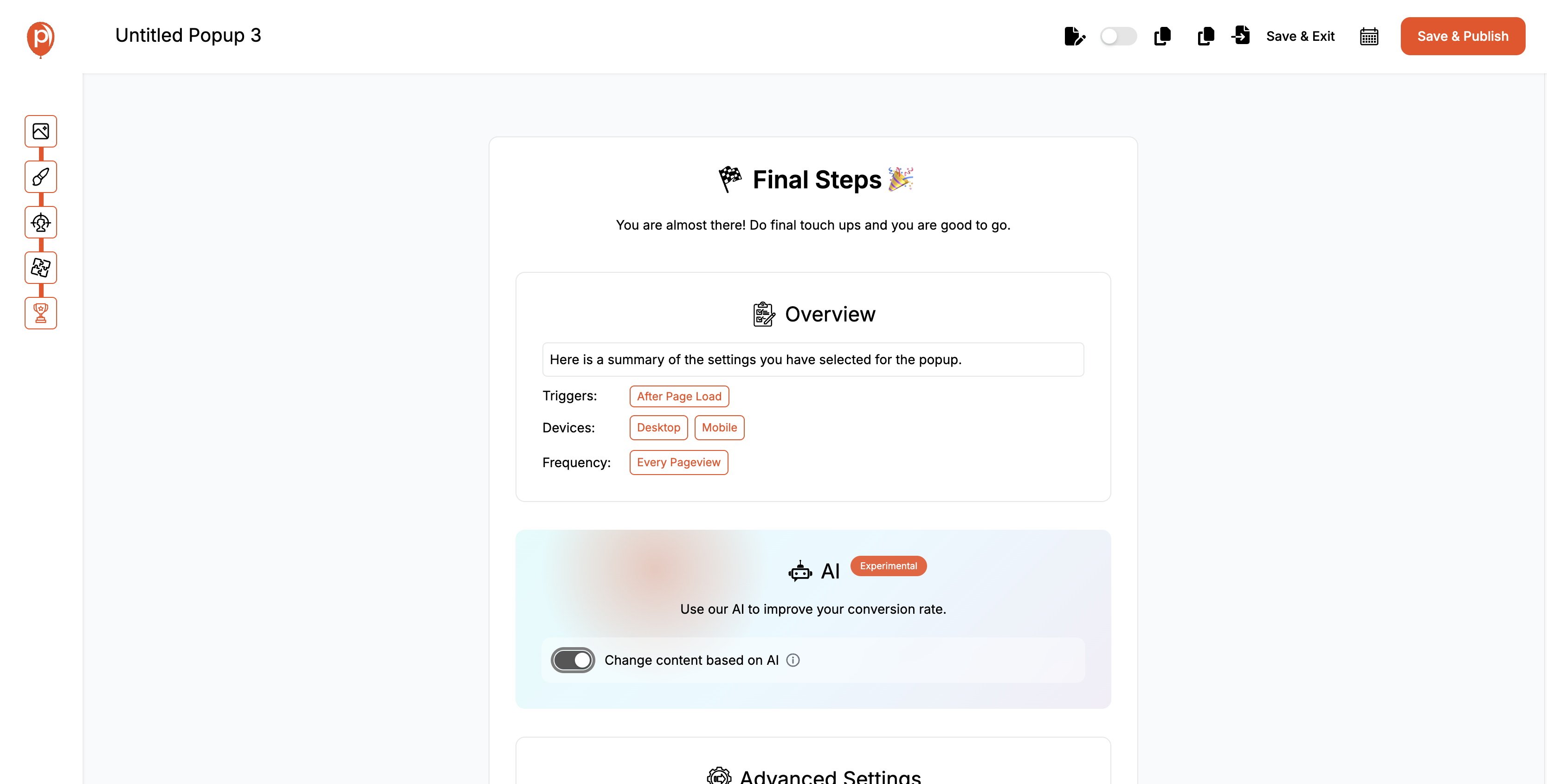
Turn on AI Mode — and let Poper automatically personalize your popup for each visitor based on:
Browsing behavior
Purchase intent
Cart contents
Previous interactions
Example:
A new user might see “Upgrade and save 10% today,” while a returning customer sees “Welcome back! Unlock a loyalty discount of 15%.”
Step 7: Preview and Launch
Before going live, use the Preview Mode to test your popup on desktop and mobile. Once satisfied, hit Publish, and your upsell popup goes live instantly.
Poper auto-optimizes display rules, ensuring your popup never shows too often — maintaining a clean, respectful user experience.
Integrating Upsell Popups With Other Strategies
A powerful upsell popup doesn’t exist in isolation. It becomes truly effective when it’s part of a larger ecosystem — your email marketing, retargeting, loyalty programs, and onsite campaigns all working together to create a seamless customer experience.
The goal here isn’t to show more popups. It’s to connect every customer touchpoint so that your upsell offers feel natural, timely, and perfectly aligned with what the user already wants.
Email Marketing and Retargeting Alignment
Email Marketing and Retargeting Alignment
Email and retargeting campaigns are all about bringing people back — and that’s exactly where upsell popups can take over the conversation.
Here’s how you can make both channels work together effortlessly:
| Channel | Goal | How Upsell Popups Support It |
|---|---|---|
| Email Marketing | Re-engage subscribers and past buyers | Show personalized upsell popups when they return from email links (“Welcome back! Complete your upgrade.”) |
| Retargeting Ads | Bring back cart abandoners or browsers | When a retargeted user revisits, show context-aware upsell offers instead of generic popups |
| Newsletter CTA | Encourage product trials or bundles | Display popup upsells that expand on the email offer with exclusive add-ons |
Example:
You send an email about a 10% discount for existing customers. When they click through and land on your site, Poper detects their referral source and shows an upsell popup saying:
“As a loyal subscriber, you get an extra 5% off when you upgrade to Pro today!”
That’s seamless alignment — the user experiences continuity, not clutter.
Pairing Upsells With Loyalty or Referral Programs
Upsells are not just about boosting short-term revenue — they can also strengthen long-term retention when paired with loyalty and referral systems.
By integrating popups into these programs, you make your offers feel like rewards, not sales pitches.
| Integration Type | Popup Strategy | Example |
|---|---|---|
| Loyalty Program | Reward users for upgrading | “Upgrade now and earn 500 loyalty points instantly.” |
| Referral Program | Encourage sharing during upsell | “Upgrade and get ₹200 off + 10% for every friend you refer.” |
| Tiered Membership | Promote exclusive benefits | “You’re 1 step away from Gold tier — unlock free delivery on all orders.” |
Using Popups to Complement In-App or Onsite Promotions
Upsell popups don’t just have to appear on product or checkout pages — they can also enhance your in-app experiences or ongoing promotions on your website.
For SaaS products like Poper or Grigora, this is a game changer.
Here’s how you can use upsell popups across different onsite experiences:
| Promotion Type | Popup Example | Result |
|---|---|---|
| Free Trial Ending | “Your trial ends tomorrow — upgrade now and get 30% off.” | Boosts trial-to-paid conversions |
| Feature Unlock Campaigns | “Access A/B testing and analytics — included in the Pro plan.” | Encourages plan upgrades |
| Seasonal Offers | “This Diwali only: Upgrade to Premium for ₹199 off.” | Drives urgency-based upsells |
| Gamified Offers | “Spin the wheel to unlock your upsell discount!” | Increases engagement and fun |
Real-World Examples and Case Studies
“The proof of good marketing isn’t in theory — it’s in conversions.”
Upsell popups are not just clever marketing tricks. When done right, they directly influence revenue, average order value (AOV), and customer lifetime value (LTV).
Let’s look at a few real-world examples and case studies that show how brands — from eCommerce to SaaS — use upsell popups effectively, what they got right, and what lessons we can take from them.
How Brands Boosted Revenue with Upsell Popups
Example 1: The Fashion Retailer That Increased AOV by 28%
A mid-sized fashion brand introduced upsell popups using Poper’s “Cart Value” trigger. The goal? To encourage customers to add one more item before checkout.
Strategy Used:
Popup triggered when cart total reached ₹1,200
Message: “Add accessories worth ₹300 more and get free express shipping!”
CTA: “Add Accessories”
Results:
| Metric | Before | After Using Upsell Popup |
|---|---|---|
| Average Order Value (AOV) | ₹1,350 | ₹1,730 (+28%) |
| Cart Abandonment Rate | 67% | 54% |
| Conversion Rate | 3.2% | 4.6% |
Key Takeaway:
Small incentives like free shipping or bonus items can drive meaningful revenue increases when communicated at the right moment.
Example 2: SaaS Platform Improved Trial-to-Paid Conversions by 32%
A productivity software company used Poper to show post-trial upsell popups encouraging users to upgrade to premium.
Strategy Used:
Popup shown 2 days before the free trial ended
Personalized with user name and usage data
Offer: “You’ve completed 8 tasks this week! Upgrade now to access team features.”
Results:
| Metric | Before | After Implementation |
|---|---|---|
| Trial-to-Paid Conversion | 12% | 15.8% (+32%) |
| Popup CTR | — | 14.2% |
| Retention (after 30 days) | 74% | 81% |
Key Takeaway:
Timing and personalization are everything. Popups triggered by user activity feel like support, not sales pressure.
Example of a Perfectly Timed Upsell Popup
Sometimes, even a single popup can make all the difference.
A digital art tools company noticed users frequently leaving during checkout. They implemented a checkout upsell popup with a one-time bundle offer.
Popup Example:
“Complete your order now and add our premium brushes pack for ₹199 — save 60% instantly!”
The popup triggered when users hovered over the “close tab” button (exit-intent).
Result:
18% of users accepted the upsell
24% reduction in checkout abandonment
Lesson:
Exit-intent popups work best when the offer adds obvious value instead of desperation.
What You Can Learn from Failed Upsell Attempts
Not every popup wins — and that’s okay. Failure teaches refinement.
Case: A beauty eCommerce brand saw 40% higher bounce rates after adding a full-screen upsell popup that appeared immediately after page load.
What went wrong:
- The popup was intrusive. It covered the entire screen immediately on arrival.
- No clear value. The offer was generic and didn’t consider the user’s journey.
With Poper, they switched to:
- Exit-intent popups with a compelling, personalized offer.
- Time-on-page or scroll-based triggers to allow users to engage first.
Poor timing (showing too soon)
No personalization (same popup for all users)
Too many distractions on the popup
How they fixed it:
With Poper, they switched to:
- Exit-intent popups with a compelling, personalized offer.
- Time-on-page or scroll-based triggers to allow users to engage first.
Scroll trigger (popup after 60% page scroll)
Dynamic product matching (suggested add-ons based on cart items)
Simplified design with a single CTA
FAQs
How can I avoid annoying my visitors with popups?
By focusing on relevance, timing, and frequency control.
Show fewer, more personalized popups — and use Poper’s frequency capping to limit exposure per session. The goal is to assist, not interrupt.Can small businesses benefit from upsell popups
Absolutely. Upsell popups help increase AOV even if your traffic is small.
Small eCommerce stores or SaaS startups can see 10–30% revenue lifts just by implementing contextual upsells like “Add one more item for free shipping” or “Upgrade to Pro for 20% off.”Can small businesses benefit from upsell popups?
Absolutely. Upsell popups help increase AOV even if your traffic is small.
Small eCommerce stores or SaaS startups can see 10–30% revenue lifts just by implementing contextual upsells like “Add one more item for free shipping” or “Upgrade to Pro for 20% off.”How do I measure ROI from upsell popups?
Track conversion rate, click-through rate (CTR), and AOV before and after implementing popups.
In Poper, all these metrics are available in one dashboard, helping you connect popups directly to sales performance.Can I automate and personalize upsell popups with AI in Poper?
Yes. Poper’s AI engine analyzes visitor behavior, purchase intent, and site interactions to show the most relevant offer automatically.
It adjusts timing, design, and messaging for each user — giving you personalization that scales effortlessly.
